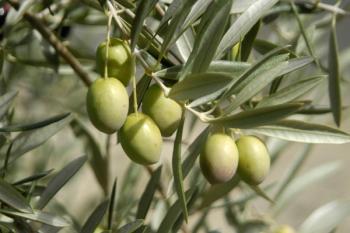
Why isn’t there more organic curcumin available?
The challenges of producing organic curcumin. And does organic really mean better?
Curcumin is nearly a household name in 2019 and is available as both a standalone supplement and an ingredient within supplement blends. Curcumin is a polyphenol derived from turmeric (Curcuma longa): a botanical which, according to the National Institutes of Health’s National Center for Biotechnical Information (NCBI), “aids in the management of oxidative and inflammatory conditions, metabolic syndrome, arthritis, anxiety, and hyperlipidemia.” It may also offer some defense against muscle inflammation and soreness, and cognitive decline.
Curcumin itself, “combined with enhancing agents” such as piperine, offers multiple health benefits, NCBI asserts. Indeed, turmeric has been used in Ayurvedic medicine in South Asia, especially, for centuries, for such conditions as rheumatism, fatigue, pain, and breathing problems.
In addition to its manufacture and branding for oral supplements, curcumin is produced for the cosmetics industry and as a food additive.
Conventional curcumin is grown in India, Asia, and Central America and is widely available. Organic extractions are available, too: But are they better? And to what extent is curcumin adulteration a problem? Ahead, we examine the challenges of producing organic curcumin and discuss issues curcumin processors and branders face.
The High Cost of “Organic”
“There’s a general movement, with spices as well as natural ingredients, toward organic and non-GMO. Those are powerful movements,” says Len Monheit, executive director of the Global Curcumin Association (GCA), which represents seven member companies. “The challenge comes when you’re trying to claim 95% curcuminoids on your curcumin supplement label,” Monheit explains. “Much of the research done is on curcumin at the 95%-curcuminoids level, and in order to get to that level, you need to do various extraction and concentrating steps. To do that with organics alone is really costly. So most of the products that are labeled ‘organic’ won’t claim 95% curcuminoids,” he continues.
Herbal-ingredient supplier and GCA founding member Sabinsa (East Windsor, NJ) points out that quantity is an issue with organics as well. Particularly in India, explains Shaheen Majeed, president worldwide, Sabinsa, significant challenges exist that limit the quantities of organic curcumin available.
“One of these is the proliferation of small farmers-as opposed to huge farms-who make agricultural decisions independently of each other,” Majeed explains. “These individual small farms may not be likely to band together to all follow the same agricultural practices, such as those for certified-organic farming, because of societal barriers. Organic material sourced in this kind of situation is significantly more expensive.” Corporate farming is the alternative, but limited availability of large plots of land in India is a problem, Majeed adds.
GCA’s Monheit continues, “It’s difficult to get an efficacious extraction at a tolerable price point because you need to use organic solvents, too, and those can be expensive as well.” As a result, “organic” on a curcumin label sometimes serves as a “halo, and nothing more,” he says.
Kristen Marshall of founding GCA member company Verdure Sciences (Noblesville, IN), which produces Longvida Optimized Curcumin, agrees with Monheit’s assessment and adds that an “organic” or “certified organic” claim does not make a product “inherently superior to other options on the shelf.” Organic turmeric extracts can yield high levels of curcuminoids, Marshall says, “but these extracts tend to then be offered at a much higher cost.” She continues, “Just because a product is ‘organic’ doesn’t mean it’s better, and, in fact, there’s a lot of confusion with the term organic and how it is interpreted by media, industry, and consumers.
“And just because a botanical is conventionally grown doesn’t mean it is or isn’t good quality,” she continues. “There are many farming programs, specifically with turmeric, that are controlled but don’t necessarily fall under the ‘certified organic program’ banner.”
Sabinsa’s Majeed agrees, explaining that the turmeric producers with whom his company works adhere to farming practices that, while not certified organic, are not reliant on chemicals.
“Traditional farming methods used by small farmers in India tend to be those you think of that are more harmonious with the land and have been used for hundreds of years,” Majeed states. “For example, the farmers plant herbs that repel pests alongside the curcumin. The farmers live alongside their fields and are constantly monitoring their condition. The ox and goats on the farm fertilize the fields, rather than commercial fertilizer that may include sewer sludge, as is common in some other countries. And we train the farmers we contract with in good agricultural practices that produce high-quality material without needing added chemicals.”
Verdure’s Marshall posits that a curcumin product claiming a particular level of curcuminoids, such as the 95% figure, is also not necessarily higher quality or more effective-more is not always better, she stresses. “Given bioavailability concerns, several companies have different delivery technologies that offer varying amounts of curcuminoids. Our Longvida product, for example, is standardized to offer approximately 20% curcumin via Solid Lipid Curcumin Particle Technology, which allows our curcumin to survive initial digestion and systemically circulate to deliver free curcumin” throughout the body. Therefore, Marshall contends, the claims of “organic,” “95% curcuminoids,” and efficacy are not inherently interrelated, or equivalent to superiority.
She adds that in many cases, additional certifications, which may include organic, are tools suppliers use to help corroborate and relay messages of traceability and transparency to their customers.
Avoiding Adulteration, Synthetics, and Other Problems
Curcumin is wildly popular, “and we know that any popular category is going to be exploited,” GCA’s Monheit says. GCA is aware of adulteration issues and the existence of cheap synthetic curcumin being sold as the real thing, and, as a result, one requirement of GCA membership is for members to send GCA some product for testing in either of the two laboratories it uses. “We at GCA also believe,” Monheit continues, “that every manufacturer should add a specification and actually do testing on their raw materials for the presence of synthetic adulteration. Many do not.”
Steve Geiger, vice president of sales, USA, for GCA member company Vidya Herbs (Fullerton, CA), points to “identifying critical control points” along a vertically integrated supply chain as a method for combatting adulteration. “One of the challenges is to establish, and then maintain, a vertically integrated supply chain. This is done to ensure full traceability and standardization of curcuminoids, and the ability to control quality at every stage.”
“All of our turmeric extracts are C14 carbon tested and TRU-ID/DNA certified,” he adds.
Sabinsa was, as mentioned, a founding member of GCA and says it alerted industry to the problem of synthetics and adulteration years ago. “We have very close relationships with our farmers and can tell you they are as concerned about the synthetic curcumin on the market masquerading as naturally derived as we are,” Majeed says. “That petroleum-derived material is sold incredibly cheaply, which is why some manufacturers buy it. Serious safety concerns and FDA’s denial that synthetic [ingredients are] allowed aside, these farmers are worried about their livelihoods.”
Since GCA was formed, “we are happy to have an ally in this fight against synthetic adulteration,” Majeed concludes.
Newsletter
From ingredient science to consumer trends, get the intel you need to stay competitive in the nutrition space—subscribe now to Nutritional Outlook.





